48 Best Colleges for Environmental Science – 2024
April 16, 2024

Every environmental science program will include a dose of basic math, science, biology, chemistry, geology, and physics. After all, tackling issues as massive as climate change and preserving our scarce natural resources will require an interdisciplinary effort. What separates the wheat from the chaff (you’ll learn this procedure in an Agronomy class) are the program’s hands-on offerings, study abroad opportunities, and expert faculty. Additionally, the best colleges for environmental science prepare students to be great communicators, writers, and problem-solvers so that they can better influence policy-makers to help make the earth a sustainable place.
Along your way toward earning your undergraduate degree, you may wish to specialize in a particular area such as: Biodiversity and Evolution, Ecology and Conservation, or just pure Environmental Science. You’ll likely encounter coursework in environmental policy, global change, physical geology, genetics and evolution, anatomy, sustainability, vertebrate morphology, ecology, and more.
Methodology
Click here to read our methodology for the Best Colleges for Environmental Science Majors.
Best Colleges for Environmental Science
Here’s a quick preview of the first ten institutions that made our list. Detailed profiles and stats can be found when you scroll below.
1) Northwestern University
2) Johns Hopkins University
3) Duke University
4) Brown University
5) University of California-Davis
6) University of California-Berkeley
7) Columbia University
8) University of Virginia
9) Dartmouth College
10) Rice University
All of the schools profiled below have stellar reputations in the field of environmental science and commit substantial resources to undergraduate education. For each of the Best Colleges for Environmental Science, College Transitions will provide you with—when available—each school’s:
We will also include a longer write-up of each college’s:
- Academic Highlights – Includes facts like student-to-faculty ratio, average class size, number of majors offered, and most popular majors.
- Professional Outcomes – Includes info on the rate of positive outcomes, companies employing alumni, and graduate school acceptances.

Northwestern University
- Evanston, IL
Academic Highlights: Northwestern is home to six undergraduate schools, including Medill, which is widely regarded as one of the country’s best journalism schools. The McCormick School of Engineering also achieves top rankings, along with programs in economics, social policy, and theatre. The social sciences account for the greatest number of degrees conferred (19%), followed by communications/journalism (13%), and engineering (11%). 45% of classes have nine or fewer students enrolled; 78% have fewer than twenty enrollees. 57% of recent grads had the chance to conduct undergraduate research.
Professional Outcomes: Six months after graduating, 69% of the Class of 2022 had found employment and 27% were in graduate school. The four most popular professional fields were consulting (18%), engineering (18%), business/finance (16%), and communications/marketing/media (13%). Employers included the BBC, NBC News, The Washington Post, NPR, Boeing, Google, IBM, Deloitte, PepsiCo, Northrop Grumman, and Goldman Sachs. Across all majors, the average starting salary was $73k. Of those headed straight to graduate school, engineering, medicine, and business were the three most popular areas of concentration.
- Enrollment: 8,659 (undergraduate); 14,073 (graduate)
- Cost of Attendance: $91,290
- Median SAT: 1530
- Median ACT: 34
- Acceptance Rate: 7%
- Retention Rate: 98%
- Graduation Rate: 97%

Johns Hopkins University
- Baltimore, MD
Academic Highlights: With 53 majors as well as 51 minors, JHU excels in everything from its bread-and-butter medical-related majors to international relations and dance. Boasting an enviable 6:1 student-to-faculty ratio and with 78% of course sections possessing an enrollment under 20, face time with professors is a reality. Many departments carry a high level of clout, including biomedical engineering, chemistry, English, and international studies. Biology, neuroscience, and computer science, which happen to be the three most popular majors, can also be found at the top of the national rankings.
Professional Outcomes: The Class of 2022 saw 94% of graduates successfully land at their next destination within six months of exiting the university; 66% of graduates entered the world of employment and a robust 19% went directly to graduate/professional school. The median starting salary across all majors was $80,000 for the Class of 2022. JHU itself is the most popular choice for graduate school. The next most frequently attended institutions included Columbia, Harvard, Yale, and MIT.
- Enrollment: 6,044
- Cost of Attendance: $86,065
- Median SAT: 1540
- Median ACT: 35
- Acceptance Rate: 7%
- Retention Rate: 97%
- Graduation Rate: 95%

Duke University
- Durham, NC
Academic Highlights: The academic offerings at Duke include 53 majors, 52 minors, and 23 interdisciplinary certificates. Class sizes are on the small side—71% are nineteen or fewer, and almost one-quarter are less than ten. A stellar 5:1 student-to-faculty ratio helps keep classes so reasonable even while catering to five figures worth of graduate students. Computer Science is the most popular area of concentration (11%), followed by economics (10%), public policy (9%), biology (8%), and computer engineering (7%).
Professional Outcomes: At graduation, approximately 70% of Duke diploma-earners enter the world of work, 20% continue into graduate schools, and 2% start their own businesses. The industries that attract the largest percentage of Blue Devils are tech (21%), finance (15%), business (15%), healthcare (9%), and science/research (6%). Of the 20% headed into graduate school, a hefty 22% are attending medical school, 18% are in PhD programs, and 12% are entering law school. The med school acceptance rate is 85%, more than twice the national average.
- Enrollment: 6,640
- Cost of Attendance: $85,238
- SAT Range: 1490-1570
- ACT Range: 34-35
- Acceptance Rate: 6%
- Retention Rate: 98%
- Graduation Rate: 97%
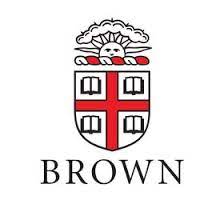
Brown University
- Providence, RI
Academic Highlights: Students must choose one of 80+ “concentration programs,” but there are no required courses. Class sizes tend to be small—68% have fewer than twenty students—and 35% are comprised of nine or fewer students. Biology, economics, computer science, mathematics, and engineering are among the most popular areas of concentration at Brown; however, it is hard to distinguish any one program, because Brown possesses outstanding offerings across so many disciplines.
Professional Outcomes: Soon after receiving their Brown diplomas, 69% of graduates enter the world of employment. Companies employing the greatest number of Brown alums include Google, Microsoft, Goldman Sachs, Amazon, Morgan Stanley, Apple, McKinsey & Company, and Bain & Company. The Class of 2022 saw 27% of graduates go directly into graduate/professional school. Right out of undergrad, Brown students boasted an exceptional 81% admission rate to med school and an 81% admission rate to law school.
- Enrollment: 7,639
- Cost of Attendance: $84,828
- Median SAT: 1530
- Median ACT: 35
- Acceptance Rate: 5%
- Retention Rate: 99%
- Graduation Rate: 96%
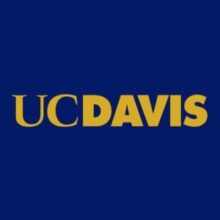
University of California, Davis
- Davis, CA
Academic Highlights: UC Davis offers 100+ undergraduate majors across four schools: the College of Agricultural and Environmental Sciences, the College of Biological Sciences, the College of Engineering, and the College of Letters and Science. 50% engage in some type of research/creative project outside the classroom. The areas of study with the largest number of degrees awarded were biology, the social sciences, psychology, and engineering. Programs in engineering, computer science, and animal science are nationally renowned.
Professional Outcomes: Many recent grads found homes at Silicon Valley or other California-based employers. Corporations employing 200 or more Aggies include Genentech, Google, Apple, Cisco, Meta, Oracle, Amazon, Microsoft, Salesforce, and LinkedIn. Ten years out of school, median earnings rise to $112k. Within one year of graduating, 39% of Aggies elect to continue their education; the most popular degrees pursued are master’s, MDs or other health doctorates, law, and MBA/MPA.
- Enrollment: 31,797 (undergraduate); 9,053 (graduate)
- Cost of Attendance: $41,389 (in-state); $73,963 (out-of-state)
- Median SAT: Test Blind
- Median ACT: Test Blind
- Acceptance Rate: 42%
- Retention Rate: 93%
- Graduation Rate: 87%

University of California, Berkeley
- Berkeley, CA
Academic Highlights: More than 150 undergraduate majors and minors are available across six schools: the College of Letters and Science, the College of Chemistry, the College of Engineering, the College of Environmental Design, the College of Natural Resources, and the Haas School of Business. Many departments have top international reputations including computer science, engineering, chemistry, English, psychology, and economics. 22% of sections contain nine or fewer students, and over 55% of students assist faculty with a research project or complete a research methods course.
Professional Outcomes: Upon graduating, 49% of Cal’s Class of 2022 had already secured employment, and 20% were headed to graduate school. Business is the most popular sector, attracting 62% of employed grads; next up are industrial (17%), education (8%), and nonprofit work (7%). The median starting salary was $86,459 across all majors. Thousands of alumni can be found in the offices of Google, Apple, and Meta, and 500+ Golden Bears are currently employed by Oracle, Amazon, and Microsoft. The school is the number one all-time producer of Peace Corps volunteers.
- Enrollment: 32,831 (undergraduate); 12,914 (graduate)
- Cost of Attendance: $48,574 (in-state); $82,774 (out-of-state)
- Median SAT: Test Blind
- Median ACT: Test Blind
- Acceptance Rate: 11%
- Retention Rate: 96%
- Graduation Rate: 94%

Columbia University
- New York, NY
Academic Highlights: Columbia offers 100+ unique areas of undergraduate study as well as a number of pre-professional and accelerated graduate programs. Class sizes at Columbia are reasonably small and the student-to-faculty ratio is favorable; however, in 2022, it was revealed that the university had been submitting faulty data in this area. It is presently believed that 58% of undergraduate courses enroll 19 or fewer students. The greatest number of degrees are conferred in the social sciences (22%), computer science (15%), engineering (14%), and biology (7%).
Professional Outcomes: Examining the most recent graduates from Columbia College and the Fu Foundation School of Engineering & Applied Science, 73% had found employment within six months, and 20% had entered graduate school. The median starting salary for graduates of Columbia College/Columbia Engineering is above $80,000. Many graduates get hired by the likes of Amazon, Goldman Sachs, Morgan Stanley, Google, Citi, McKinsey, and Microsoft.
- Enrollment: 8,832
- Cost of Attendance: $89,587
- Median SAT: 1540
- Median ACT: 35
- Acceptance Rate: 4%
- Retention Rate: 98%
- Graduation Rate: 95%

University of Virginia
- Charlottesville, VA
Academic Highlights: Undergrads can study within one of seven colleges/schools, which all offer many small classes; 15% boast single-digit enrollment and 48% contain 19 or fewer students. The McIntire School of Commerce and the School of Engineering and Applied Science have glowing reputations. Other notable strengths include computer science, economics, and political philosophy, policy, and law. The most popular degree areas are liberal arts/general studies (22%), the social sciences (14%), engineering (11%), business/marketing (8%), and biology (7%).
Professional Outcomes: Upon receiving their degree, 95% of the Class of 2022 immediately joined the workforce–with an average starting salary of $90k–or headed directly to graduate school. The most popular industries were internet & software, higher education, and management consulting. Capital One (85), Deloitte (46), Amazon (38), and Bain & Co. (26) scooped up the greatest number of 2022 grads. UVA itself was the most popular grad school destination followed by Columbia, Virginia Commonwealth University, and Johns Hopkins.
- Enrollment: 17,496 (undergraduate); 8,653 (graduate)
- Cost of Attendance: $39,494-49,874 (in-state); $78,214-90,378 (out-of-state)
- Median SAT: 1470
- Median ACT: 33
- Acceptance Rate: 19%
- Retention Rate: 97%
- Graduation Rate: 95%

Dartmouth College
- Hanover, NH
Academic Highlights: Dartmouth sports 60+ majors and a stunning breadth of course selections for an institution of its size. The learning environment at Dartmouth is extraordinarily intimate. Not only do 61% of course sections have under twenty students, but 18% have single-digit enrollments. The student-to-faculty ratio is an outstanding 7:1. Top programs offered by Big Green include biology, economics, neuroscience, and government. The social sciences are the most popular, accounting for 32% of degrees conferred, followed by computer science (10%), mathematics (9%), engineering (9%), and biology (7%).
Professional Outcomes: A great reputation along with a passionate alumni network that is 80,000 strong leads Dartmouth grads to successful transitions into graduate school and the world of work. Included in the top ten employers of Dartmouth grads are a number of investment banks including Goldman Sachs, Morgan Stanley, Bain & Company, Citibank, and Deutsche Bank. Right off the bat, 52% of graduates make more than $70,000 in salary. Those pursuing graduate degrees often flock to the likes of Harvard, Columbia, and Princeton.
- Enrollment: 4,458
- Cost of Attendance: $87,793
- Median SAT: 1550
- Median ACT: 34
- Acceptance Rate: 6%
- Retention Rate: 98%
- Graduation Rate: 95%

Rice University
- Houston, TX
Academic Highlights: Rice offers more than 50 majors across six broad disciplines: engineering, architecture, music, social science, humanities, and natural science. Programs in biology, biochemistry, cognitive science, and music are incredibly strong, while the School of Architecture and the George R. Brown School of Engineering are among the highest-ranking schools in their disciplines. One-third of computer science majors are female, almost twice the national average. Class sizes are ideally small with 66% containing fewer than 20 students and a median class size of only fourteen.
Professional Outcomes: Six months after graduation, 88% of Rice grads have found careers or a graduate school home. Companies that employ many recent grads include Deloitte, Capital One, JP Morgan Chase, Google, and Microsoft. Over one hundred alumni are also current employees of companies such as Shell, ExxonMobil, Chevron, Amazon, Accenture, and Meta. Across all majors, the average starting salary is $73k. One-third of graduates move directly into graduate or professional school, with Harvard, Yale, Stanford, MIT, Columbia, and Berkeley being the most popular destinations.
- Enrollment: 4,494 (undergraduate); 4,178 (graduate)
- Cost of Attendance: $78,278
- Median SAT: 1530
- Median SAT: 35
- Acceptance Rate: 9%
- Retention Rate: 94%
- Graduation Rate: 98%

Middlebury College
- Middlebury, VT
Academic Highlights: Midd offers 50 departments and programs in which to major and minor. The school’s 9:1 student-faculty ratio allows 100% of courses to be taught by professors, not graduate assistants. Most classes are small; the mean class size is 16, and 14% of sections contain fewer than ten students. Middlebury is renowned for its Language Department as well as its programs in economics and international studies. The college has a robust international program (75 programs in 40 countries); over 50% of juniors take a semester abroad.
Professional Outcomes: Six months after graduating, 81% of the Class of 2022 had landed jobs and 12% were in graduate school. The most commonly held jobs fell under the categories of financial services (19%), consulting (14%), science and healthcare (14%), and media and technology (12%). Many Middlebury grads now enter tech-related fields; Google and Facebook are two of the leading employers alongside Morgan Stanley, Goldman Sachs, Deloitte, Amazon, and JP Morgan. More than 100 alumni work in the US State Department.
- Enrollment: 2,773 (undergraduate); 70 (graduate)
- Cost of Attendance: $89,850
- Median SAT: 1460
- Median ACT: 33
- Acceptance Rate: 13%
- Retention Rate: 95%
- Graduation Rate: 94%

University of Chicago
- Chicago, IL
Academic Highlights: There are 53 majors at UChicago, but close to half of all degrees conferred are in four majors: economics, biology, mathematics, and political science, all of which have particularly sterling reputations. Economics alone is the selection of roughly one-fifth of the undergraduate population. Over 75% of undergrad sections have an enrollment of nineteen or fewer students, and undergraduate research opportunities are ubiquitous as 80% of students end up working in a research capacity alongside a faculty member.
Professional Outcomes: On commencement day, 99% of the Class of 2023 were employed or continuing their education. Business and financial services (30%) and STEM (12%) were the two sectors that scooped up the most graduates, but public policy and consulting were also well-represented. The most popular employers of recent grads include Google, JPMorgan, Goldman Sachs, McKinsey & Company, Bank of America, Citi, and Accenture. For those heading to grad school, the top seven destinations are Yale, Columbia, Penn, MIT, Stanford, UCLA, and Johns Hopkins.
- Enrollment: 7,653 (undergraduate); 10,870 (graduate)
- Cost of Attendance: $89,040
- Median SAT: 1540
- Median ACT: 35
- Acceptance Rate: 5%
- Retention Rate: 99%
- Graduation Rate: 96%

Colorado College
- Colorado Springs, CO
Academic Highlights: Rather than the typical semester schedule, Colorado College operates on the “block plan,” a series of eight three-and-half-week periods during which students take only one course. You won’t find a more intimate liberal arts college than CC. Classes have a cap of 25 students, and no more than a handful of courses exceed that figure. The average class consists of 16 students. In terms of sheer volume, most degrees are conferred in the social sciences (28%), biology (17%), natural resources and conservation (8%), and physical science (6%).
Professional Outcomes: Among the Class of 2022, an impressive 99% arrived successfully at their next destination within six months of earning their diploma. The largest number of graduates who pursue employment end up in the fields of education, technology, health care, the arts, and government. The bachelor’s degree earned at Colorado College is unlikely to be the last degree a graduate will earn. Five years after graduation, the typical cohort sees 70-90% of its members having either completed or finishing an advanced degree.
- Enrollment: 2,180
- Cost of Attendance: $87,128
- Median SAT: 1380
- Median ACT: 32
- Acceptance Rate: 16%
- Retention Rate: 91%
- Graduation Rate: 86%

Pomona College
- Claremont, CA
Academic Highlights: There are 48 majors and minors to select from with the most popular being social sciences (23%), biology (13%), and computer science (12%). Majors in economics, international relations, chemistry, and mathematics receive especially high marks. More than 600 courses are on the menu at Pomona alone, but students can access any of the Claremont Consortium’s 2,700 courses. Pomona’s 8:1 student-to-teacher ratio leads to an average class size of only 15 students, and over 50% of the undergraduate population conduct research alongside a faculty member.
Professional Outcomes: 71% of the Class of 2022 were employed within six months of graduating. Overall, the largest number of alumni can be found at Google, Kaiser Permanente, Microsoft, Amazon, and Meta. Recently, economics degree-earners have landed jobs at Goldman Sachs, Wells Fargo, Morgan Stanley, or Accenture. Majors in the hard sciences frequently landed at top research laboratories and hospitals. Of the 21% of 2022 grads who were accepted directly into graduate school, the most frequently attended institutions included the University of Cambridge, Duke, Harvard, Caltech, UChicago, and Stanford.
- Enrollment: 1,761
- Cost of Attendance: $88,296
- Median SAT: 1520
- Median ACT: 34
- Acceptance Rate: 7%
- Retention Rate: 96%
- Graduation Rate: 93%

University of Notre Dame
- Notre Dame, IN
Academic Highlights: 75 majors are offered across six undergraduate colleges: the School of Architecture, the College of Arts and Letters, the Mendoza School of Business (one of the country’s best business schools), the College of Engineering, the Keough School of Global Affairs, and the College of Science. In 2022, the most degrees were conferred in business (20%), the social sciences (18%), engineering (12%), and biology (8%). A solid 60% of courses enroll fewer than 20 students, and 15% have single-digit numbers. 75% of Notre Dame undergrads study abroad.
Professional Outcomes: 69% of 2022 grads directly entered the world of employment, with the most common industries being financial services (21%), consulting (17%), technology (12%), and health services (9%). Massive numbers of alumni can be found at Deloitte, EY, PwC, IBM, Accenture, Booz Allen Hamilton, Google, Microsoft, Amazon, Goldman Sachs, JPMorgan, and McKinsey & Co. The median early-career salary was $76,000. Of the 20% of grads who went directly into their graduate/professional studies, 18% were pursuing medical degrees and 9% were studying law.
- Enrollment: 8,971 (undergraduate); 4,134 (graduate)
- Cost of Attendance: $86,125
- Median SAT: 1500
- Median ACT: 34
- Acceptance Rate: 13%
- Retention Rate: 97%
- Graduation Rate: 96%

SUNY College of Environmental Science and Forestry
- Syracuse, NY
Academic Highlights: There are 27 majors at the SUNY College of Environmental Science and Forestry and a terrific 12:1 student-to-faculty ratio. An excellent 64% of class sections are fairly small, enrolling 19 or fewer students. The most frequently earned degrees are in conservation biology (12%), environmental biology (10%), natural resources management (10%), environmental health engineering (9%), and wildlife biology (9%).
Professional Outcomes: Looking at the Class of 2022, ESF had an admiral 92% career placement rate. 70% of that cohort are employed full time and 18% elected to start an advanced degree program. Top employers included WestRock, Arcadis, Environmental Design & Research, GHD, NYS Office of Parks, NYS Department of Environmental Conservation, and Parsons Corporation. Top graduate programs include GWU, PSU, Syracuse, UNC-Chapel Hill, and UIUC.
- Enrollment: 1,621
- Cost of Attendance: $29,276 (In-State); $41,306 (Out-of-State)
- Median SAT: N/A
- Median ACT: N/A
- Acceptance Rate: 70%
- Retention Rate: 86%
- Graduation Rate: 80%

University of California, Los Angeles
- Los Angeles, CA
Academic Highlights: UCLA offers 125 majors in 100+ academic departments, and more than 60 majors require a capstone experience that results in the creation of a tangible product under the mentorship of faculty members. The most commonly conferred degrees are in the social sciences (25%), biology (16%), psychology (11%), mathematics (8%), and engineering (7%). Departmental rankings are high across the board, especially in computer science, engineering, film, fine and performing arts, mathematics, and political science.
Professional Outcomes: UCLA grads flow most heavily into the research, finance, computer science, and engineering sectors. High numbers of recent grads can be found at Disney, Google, EY, Teach for America, Amazon, and Oracle. Hundreds also can be found at Bloomberg, Deloitte, Mattel, Oracle, and SpaceX. The average starting salary exceeds $55,000. 16% of recent grads enrolled directly in a graduate/professional school, with other CA-based institutions like Stanford, Pepperdine, USC, Berkeley, and Loyola Marymount being the most popular.
- Enrollment: 33,040 (undergraduate); 15,010 (graduate)
- Cost of Attendance: $38,517 (in-state); $71,091 (out-of-state)
- Median SAT: Test Blind
- Median ACT: Test Blind
- Acceptance Rate: 9%
- Retention Rate: 97%
- Graduation Rate: 93%

University of Washington – Seattle
- Seattle, WA
Academic Highlights: 180+ undergraduate majors are offered across thirteen colleges/schools. Personal connections with professors abound as 55% of grads complete a faculty-mentored research project. The College of Engineering, which includes the College of Computer Science & Engineering, is one of the best in the nation; UW also boasts strong programs in everything from business to social work to environmental science. The most popular degrees are the social sciences (13%), biology (12%), computer science (11%), and business (8%).
Professional Outcomes: Within months of graduation, 73% of Class of 2022 grads were employed and 17% were continuing their education. The most popular employers of the Class of 2022 included Google, Amazon, Microsoft, Boeing, and KPMG. Across all living alumni, 6,000+ work for Microsoft, and 4000+ work for each of Boeing and Amazon. Of those headed to graduate/professional school, just over half remain in state, mostly at UW itself. Large numbers of 2022 grads also headed to Columbia, Johns Hopkins, and USC.
- Enrollment: 36,872 (undergraduate); 16,211 (graduate)
- Cost of Attendance: $34,554 (in-state); $63,906 (out-of-state)
- Median SAT: 1420
- Median ACT: 32
- Acceptance Rate: 48%
- Retention Rate: 94%
- Graduation Rate: 84%

University of Wisconsin – Madison
- Madison, WI
Academic Highlights: There are 230+ undergraduate majors offered across eight schools and colleges, including the top-ranked School of Business and College of Engineering as well as the College of Letters and Science, the College of Agricultural and Life Sciences, and the Schools of Nursing, Education, Pharmacy, and Human Ecology. Undergrads can expect a mix of large and small classes, with 44% of sections enrolling fewer than 20 students. Business (18%), biology (12%), the social sciences (11%), and engineering (10%) are most popular.
Professional Outcomes: In a recent year, 46% of job-seeking grads graduated with an offer. Top employers included UW-Madison, Epic, Kohl’s, Oracle, Deloitte, and UW Health. Across all graduating years, companies employing 250+ alumni include Google, Target, Microsoft, Amazon, Apple, PwC, Accenture, and Meta. 28% of recent grads enrolled directly in graduate/professional school; the majority stayed at UW–Madison while others headed to Columbia, Northwestern, and Carnegie Mellon. The university is the top producer of Peace Corps volunteers.
- Enrollment: 37,230 (undergraduate); 12,656 (graduate)
- Cost of Attendance: $28,916 (in-state); $58,912 (out-of-state)
- Median SAT: 1440
- Median ACT: 30
- Acceptance Rate: 49%
- Retention Rate: 94%
- Graduation Rate: 89%

Hamilton College
- Clinton, NY
Academic Highlights: The student-to-faculty ratio is 9:1, and without any pesky graduate students to get in the way, face time with professors is a regular occurrence. In fact, 28% of all classes have nine or fewer students; 72% have nineteen or fewer. Economics, government, and biology are among the strongest and most popular majors; other standout programs include public policy, mathematics, and environmental studies. Thirty percent of students earn social science degrees, with biology (13%), visual and performing arts (9%), physical science (7%), and foreign languages (7%) next in line.
Professional Outcomes: Examining the 491 graduates in Hamilton’s Class of 2022, an enviable 97% wasted no time landing jobs, graduate school acceptances, or fellowships. The most commonly entered industries were finance (17%), education (13%), business (12%), and science/tech (11%). Only 17% of 2022 graduates went directly into an advanced degree program. In one recent year, 33% of Hamilton grads were studying a STEM field, 22% were in the social sciences, 17% pursued a health care degree, and 5% went to law school.
- Enrollment: 2,075
- Cost of Attendance: $82,430
- Median SAT: 1490
- Median ACT: 34
- Acceptance Rate: 12%
- Retention Rate: 95%
- Graduation Rate: 92%

Bates College
- Lewiston, ME
Academic Highlights: Thirty-four percent of courses at Bates have a single-digit enrollment, and 63% of classrooms contain nineteen or fewer students. The student-to-faculty ratio is 10:1, and not a single graduate student is present to vacuum up professorial attention. Twenty-eight percent of all degrees earned at Bates are in the social sciences, and psychology (14%), biology (13%), and the physical sciences (7%) are next in popularity. Though strong across many disciplines, Bates boasts exemplary programs in political science, art, philosophy, economics, and psychology.
Professional Outcomes: Within six months of graduation, 99% of the Class of 2022 were either employed, enrolled in graduate school, or otherwise meaningfully engaged in a fellowship or internship. The most frequently entered fields were healthcare (17%), education (16%), finance/banking (14%), and technology (7%). Within ten years of graduation, approximately 13% of Bates graduates are in, or have completed, law school whereas 7% enroll in medical school.
- Enrollment: 1,790
- Cost of Attendance: $81,382
- Median SAT: 1430
- Median ACT: 32
- Acceptance Rate: 14%
- Retention Rate: 93%
- Graduation Rate: 93%

Bowdoin College
- Brunswick, ME
Academic Highlights: Class sizes are small—64% contain fewer than twenty students—and 21% have fewer than ten students. The student-faculty ratio is 9:1. More than half of Bowdoin undergrads report interacting with a professor outside of regular class time at least once per week. The greatest percentage of degrees are conferred in the social sciences (30%), biology (13%), area/ethnic/gender studies (8%), computer science (7%), and mathematics (7%). Economics and government and legal studies are two of the more popular majors within the social sciences.
Professional Outcomes: An examination of three recent years’ worth of outcomes data reveals that one year after graduation, between 73 and 77% of recent grads have found full-time employment, and 15% have gone directly into graduate school. Of those entering graduate school, 48% were enrolled in master’s programs, 23% in PhD programs, 13% in law school, and 8% in med school. The top twenty graduate schools attended, by volume, in the last five years make an exclusive list including six Ivies along with Duke, MIT, Johns Hopkins, and Stanford.
- Enrollment: 1,915
- Cost of Attendance: $82,600
- Median SAT: 1510
- Median ACT: 34
- Acceptance Rate: 9%
- Retention Rate: 96%
- Graduation Rate: 94%
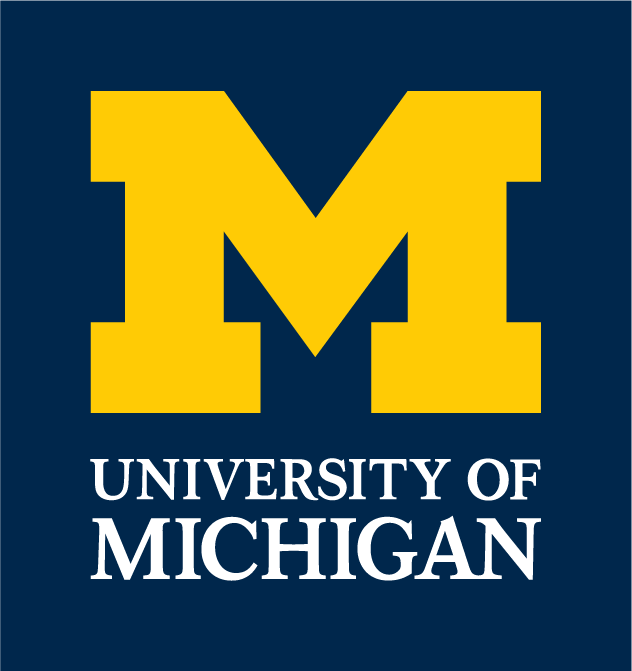
University of Michigan
- Ann Arbor, MI
Academic Highlights: There are 280+ undergraduate degree programs across fourteen schools and colleges, and the College of Literature, Science, and the Arts (LSA) enrolls the majority of students. The Ross School of Business offers highly rated programs in entrepreneurship, management, accounting, and finance. The College of Engineering is also one of the best in the country. By degrees conferred, engineering (15%), computer science (14%), and the social sciences (11%) are most popular. A solid 56% of classes have fewer than 20 students.
Professional Outcomes: Within three months of graduating, 89% of LSA grads are employed full-time or in graduate school, with healthcare, education, law, banking, research, nonprofit work, and consulting being the most popular sectors. Within three months, 99% of Ross grads are employed with a median salary of $90k. Top employers include Goldman Sachs, Deutsche Bank, EY, Morgan Stanley, PwC, Deloitte, and Amazon. Within six months, 96% of engineering grads are employed (average salary of $84k) or in grad school. General Motors, Ford, Google, Microsoft, Apple, and Meta employ the greatest number of alumni.
- Enrollment: 32,695 (undergraduate); 18,530 (graduate)
- Cost of Attendance: $35,450 (in-state); $76,294 (out-of-state)
- Median SAT: 1470
- Median ACT: 33
- Acceptance Rate: 18%
- Retention Rate: 97%
- Graduation Rate: 93%
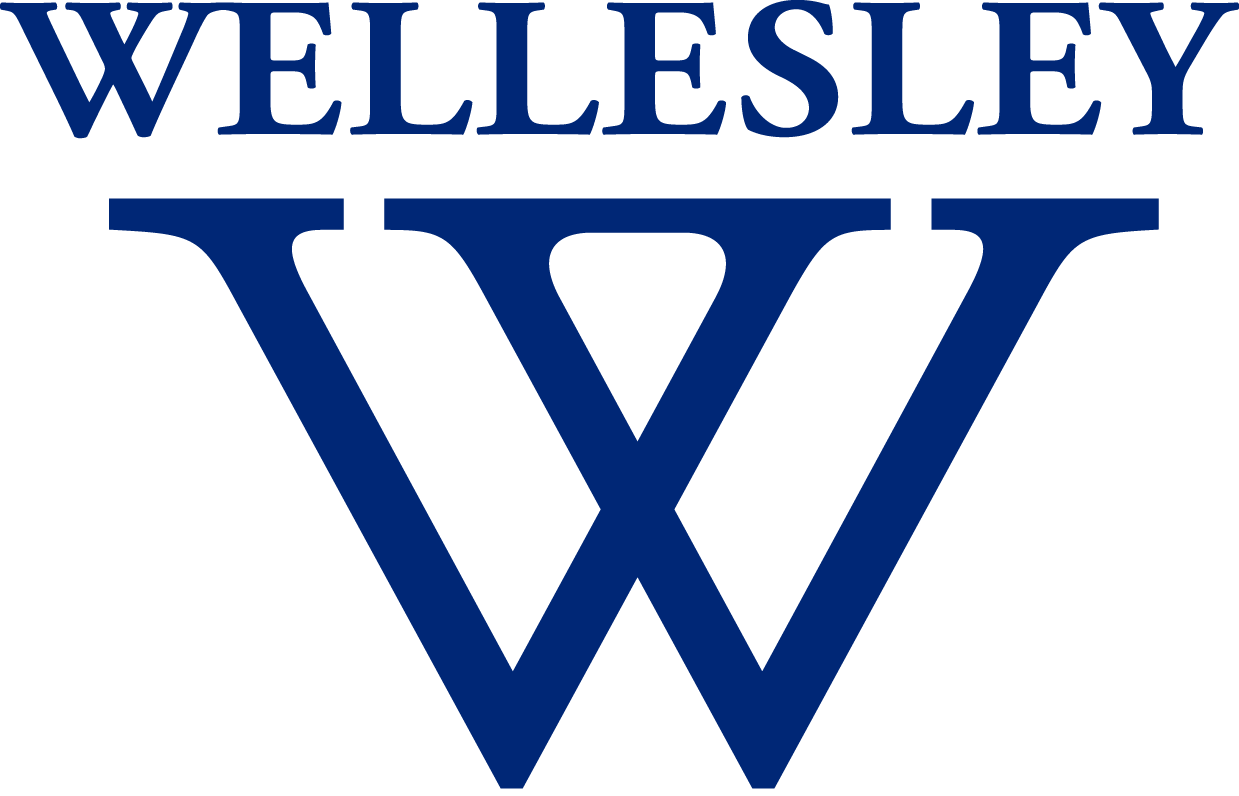
Wellesley College
- Wellesley, MA
Academic Highlights: There are 50+ departmental and interdisciplinary majors. Thirty-six percent of course sections have single-digit enrollments while 77% have 19 or fewer students. In addition, opportunities for participation in research with faculty members abound. Most programs possess sterling reputations, including chemistry, computer science, neuroscience, and political science, but the Department of Economics shines most brightly, leading many into PhD programs and high-profile careers. Economics, biology, and computer science are the most frequently conferred degrees.
Professional Outcomes: Six months after graduating, 97% of the Class of 2022 had achieved positive outcomes. Of the 76% of grads who were employed, 24% were working in the finance/consulting/business fields, 17% in education, 17% in internet and technology & engineering, and 15% in healthcare/life sciences. Top employers included JPMorgan Chase, Google, Boston Children’s Hospital, and Goldman Sachs. The average starting salary for one recent cohort was a solid $63k. Of the 20% of 2022 grads who directly entered an advanced degree program, common schools attended included Harvard, Columbia, Brown, Stanford, MIT, and Emory.
- Enrollment: 2,447
- Cost of Attendance: $84,240
- Median SAT: 1490
- Median ACT: 34
- Acceptance Rate: 14%
- Retention Rate: 95%
- Graduation Rate: 90%

Wesleyan University
- Middletown, CT
Academic Highlights: With 45 majors and 32 minors, Wes truly has something for everyone. The academic requirements are relatively minimal, giving undergrads a high degree of intellectual freedom. Under 75% of class sections have fewer than twenty students; students rave about the accessible faculty. Research opportunities with professors are plentiful. Offerings in economics, English, film studies, and neuroscience typically receive the most praise from employers/grad schools; accordingly, the social sciences (24%), psychology (17%), and the visual and performing arts (12%) are the most popular.
Professional Outcomes: Within six months of graduating, 66% of 2022 grads had entered employment, with tech/engineering/sciences, education, and arts/entertainment being the three top sectors. The companies employing the highest numbers of recent Wesleyan grads included Google, Epic, Analysis Group, Boston Medical Center, Booz Allen Hamilton, Accenture, and Apple. Graduate school was the next stop for 18% of new alums; enrolling institutions included MIT, Stanford, Berkeley, Yale, Harvard, Temple, and UMass.
- Enrollment: 3,069 (undergraduate); 184 (graduate)
- Cost of Attendance: $89,094
- Median SAT: 1430
- Median ACT: 32
- Acceptance Rate: 14%
- Retention Rate: 95%
- Graduation Rate: 93%

Davidson College
- Davidson, NC
Academic Highlights: With its small size, the impressive part of the college is the exceptional quality of its offerings, not the breadth of them, as only 37 majors are available. The student-to-faculty ratio is 9:1, which allows the college to ensure that 62% have fewer than twenty students and 24% have enrollments you can count on two hands. Overall, the average number of students per class is only 18. Top programs at Davidson include psychology, political science, chemistry, and English; biology is also quite popular, accounting for 12% of degrees conferred in 2022.
Professional Outcomes: Looking at the outcomes data for 2022 grads, 70% landed jobs within six months of graduation, 26% were enrolled in a graduate program, and 3% were still seeking employment. Of those who attended grad school, the highest number were in healthcare-related programs (including MDs), law school, and laboratory sciences. Significant numbers of students pursue advanced degrees at other Southern gems including Vanderbilt, Emory, Duke, Wake Forest, and UNC.
- Enrollment: 1,927
- Cost of Attendance: $76,450
- Median SAT: 1430
- Median ACT: 32
- Acceptance Rate: 17%
- Retention Rate: 94%
- Graduation Rate: 92%

Scripps College
- Claremont, CA
Academic Highlights: There are 65+ majors available to undergrads, including some that are accessible through membership in the Consortium. A 10:1 student-to-faculty ratio breeds an intimate learning atmosphere where professors are genuinely dedicated to undergraduate education. The top five areas of concentration are the social sciences (18%), biology (14%), natural resources/conservation (8%), psychology (7%), and area, ethnic, and gender studies (6%). Each possesses a very strong reputation.
Professional Outcomes: Scripps women land jobs at some of the world’s leading companies after receiving their diplomas. Top employers include Google, Kaiser Permanente, and Amazon. Many go on to work for universities, including Pomona, Scripps, Stanford, UCLA, and UC San Diego. Recent grads also have entered positions at BlackRock, CBS, Goldman Sachs, Meta, and Pfizer. Over 66% complete a graduate/professional program within five years of receiving their bachelor’s degrees at institutions such as Caltech, Harvard, MIT, Vanderbilt, Oxford, Brown, Northwestern, and Tufts.
- Enrollment: 1,081 (undergraduate); 19 (graduate)
- Cost of Attendance: $87,564
- Median SAT: 1460
- Median ACT: 33
- Acceptance Rate: 30%
- Retention Rate: 91%
- Graduation Rate: 84%
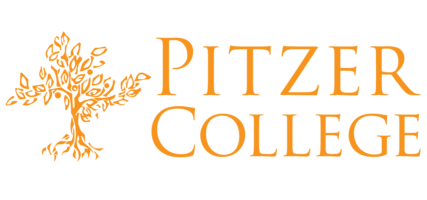
Pitzer College
- Claremont, CA
Academic Highlights: Pitzer still manages to offer 40+ majors and 20 minors and, as a bonus, students are free to take more than 2,000 courses across the consortium. The most popular majors at Pitzer are interdisciplinary studies (18%), the social sciences (18%), and psychology (8%). Nearly all programs are top-notch, but majors within the social and behavioral sciences (e.g., psychology and sociology) typically draw the most praise. A 10:1 student-to-faculty ratio and no graduate student presence lead to an average class size of 16 students.
Professional Outcomes: Upon receiving their degrees, 59% of 2022 graduates had already found full-time employers, 16% were headed to graduate school, and 9% were entering fellowship, internship, or service programs. Among those employed, the most popular industries were tech/sustainability (25%), finance/business (17%), entertainment/arts (16%), health, medicine, and research (15%), and education (12%). Employers employing more than ten alumni include Google, Kaiser Permanente, the Los Angeles Unified School District, and Accenture.
- Enrollment: 1,212
- Cost of Attendance: $89,792
- Median SAT: Test Blind
- Median ACT: Test Blind
- Acceptance Rate: 18%
- Retention Rate: 89%
- Graduation Rate: 86%
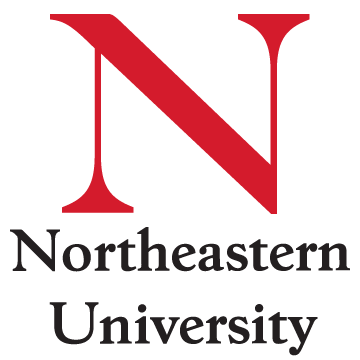
Northeastern University
- Boston, MA
Academic Highlights: Northeastern offers 290 majors and 180 combined majors within nine colleges and programs. Experiential learning is had by virtually all graduates, thanks to the school’s illustrious and robust co-op program. The D’Amore-McKim School of Business is a top-ranked school and offers one of the best international business programs anywhere, and both the College of Engineering and College of Computer Science are highly respected as well. Criminal justice, architecture, and nursing are three other majors that rate near the top nationally.
Professional Outcomes: Nine months after leaving Northeastern, 97% of students have landed at their next employment or graduate school destination. Huskies entering the job market are quickly rounded up by the likes of State Street, Fidelity Investments, IBM, and Amazon, all of whom employ 500+ Northeastern alums. Between 200 and 500 employees at Wayfair, Google, Amazon, Oracle, IBM, and Apple have an NU lineage. Starting salaries are above average (55% make more than $60k), in part due to the stellar co-op program.
- Enrollment: 20,980 (undergraduate); 15,826 (graduate)
- Cost of Attendance: $86,821
- Median SAT: 1500
- Median ACT: 34
- Acceptance Rate: 7%
- Retention Rate: 97%
- Graduation Rate: 91%

Dickinson College
- Carlisle, PA
Academic Highlights: As students immerse themselves in one of 46 areas of concentration, Dickinson supports them with a 9:1 student-to-faculty ratio and average class size of fifteen, with 78% of classes being capped at 19 students. By discipline, the greatest number of degrees are conferred in the social sciences (27%), biology (12%), business (10%), psychology (7%), and foreign languages (5%). The college’s foreign language program, which features 13 offerings—including Arabic, Hebrew, and Portuguese—is recognized as one of the top programs in the country.
Professional Outcomes: One year after graduating, 95% of Dickinson grads have found jobs or full-time volunteer work, or have enrolled in graduate school. Companies employing more than 25 Dickinson alumni include Deloitte, IBM, Morgan Stanley, JPMorgan Chase & Co., Merck, EY, PNC, PwC, Google, and Amazon. It’s interesting that more alumni can be found in New York City than in Pennsylvania. Within five years of receiving their diplomas, 55-60% of recent grads have entered or finished graduate school.
- Enrollment: 2,125
- Cost of Attendance: $86,151
- Median SAT: 1355
- Median ACT: 30
- Acceptance Rate: 35%
- Retention Rate: 89%
- Graduation Rate: 84%

Clark University
- Worcester, MA
Academic Highlights: Class sizes are fairly small with 23% containing fewer than 10 students and the average undergraduate class size is exactly 20 students. An impressive 67% of students participate in undergraduate research at some point in their four years of study. Psychology and geography are two standout departments at Clark, and psychology (14%) is actually the school’s most commonly conferred degree. Overall, 21% of degrees are conferred in the social sciences and many also earn degrees in biology (11%), the visual & performing arts (9%), and business (8%).
Professional Outcomes: Six months after graduation, 97% of Cougars have clawed their way into gainful employment or full-time graduate programs. Sixty-three percent enter private industry, 32% enter the nonprofit/education world, and 5% are employed by government entities. Of the 44% of freshly minted alumni who enrolled in graduate school, a good number continued their education at Clark or at nearby universities such as UMass Amherst, Boston College, and Boston University. Other attend Brown University, NYU, Penn, and USC.
- Enrollment: 2,389
- Cost of Attendance: $67,277
- Median SAT: 1340
- Median ACT: 32
- Acceptance Rate: 50%
- Retention Rate: 88%
- Graduation Rate: 76%

Willamette University
- Salem, OR
Academic Highlights: 30 distinct majors are offered at Willamette, and the greatest number of degrees conferred in 2022 were in the social sciences (16%) followed by a fairly even distribution among psychology (9%), biology (9%), natural resources and conservation (8%), and foreign languages (6%). Classes are exceptionally small with 75% of sections enrolling fewer than 20 students, and undergraduate research is taken seriously, with more than 75 undergraduate research grants offered annually. The school is a top producer of Fulbright Scholars.
Professional Outcomes: Currently, two dozen or more alumni work for the likes of Nike, Intel, Kaiser Permanente, Microsoft, Amazon, and Wells Fargo. Graduates of the College of Arts & Sciences enjoy an average mid-career salary of $107k; alumni have gone on to all kinds of interesting careers including analytics for the Houston Astros, IT engineer at Netflix, lead investigator at the National Cancer Institute, and bestselling author of young adult fiction. Portland has the highest concentration of Bearcats followed by Seattle, San Francisco, Los Angeles, and Denver.
- Enrollment: 1,367 (undergraduate); 548 (graduate)
- Cost of Attendance: $63,756
- Median SAT: 1320
- Median ACT: 30
- Acceptance Rate: 81%
- Retention Rate: 82%
- Graduation Rate: 76%
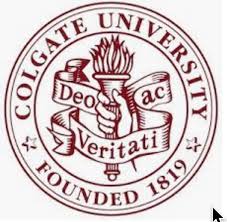
Colgate University
- Hamilton, NY
Academic Highlights: Fifty-six majors are on tap at Colgate, including all of the expected liberal arts concentrations. With a student-faculty ratio of 9:1 and an average class size of 16, Colgate undergraduates work intimately with their instructors. The social sciences account for 35% of all degrees conferred and, within that umbrella, economics, political science, and English are among the most popular and most well-regarded majors.
Professional Outcomes: Nine months after graduation, only a small number of Colgate alumni are still looking for work; in 2022, that group represented less than 2% of the graduating class. A substantial 80% had already landed full-time jobs. Employers hiring the most Colgate grads included BOA, Merrill Lynch, JP Morgan, EY, Wayfair, and the NIH. 85-95% of law school applicants are accepted into one of their target institutions. The medical school numbers were even more impressive with 100% of graduating seniors gaining acceptance into at least one med school.
- Enrollment: 3,130
- Cost of Attendance: $83,814
- Median SAT: 1470
- Median ACT: 33
- Acceptance Rate: 12%
- Retention Rate: 94%
- Graduation Rate: 91%

University of Colorado Boulder
- Boulder, CO
Academic Highlights: CU Boulder offers 90 bachelor’s degree programs across seven different schools and colleges; the College of Engineering & Applied Science and the Leeds School of Business both possess excellent national reputations. Business/marketing is the discipline where the greatest number of degrees (15%) were conferred in 2022. Engineering (13%), biology (12%), social sciences (12%), and journalism (10%) are next in popularity. 41% of classes have fewer than 20 students, and only 19% of courses enroll 50 or more students.
Professional Outcomes: Within six months of leaving CU Boulder, 91% of recent grads were working or in graduate school. Those employed earned an estimated median salary of $54k, with the greatest number working at Lockheed Martin, Ball Aerospace, Deloitte, Qualcomm, Northrop Grumman, KPMG, Charles Schwab, and Boeing. More than 100 alumni can also be found at Google, Oracle, Amazon, Apple, and Microsoft. 20% of new grads immediately jumped into an advanced degree program, and 80% were accepted into their first-choice school.
- Enrollment: 31,103 (undergraduate); 7,110 (graduate)
- Cost of Attendance: $31,744 (in-state); $60,118 (out-of-state)
- Median SAT: 1280
- Median ACT: 29
- Acceptance Rate: 79%
- Retention Rate: 88%
- Graduation Rate: 75%

Boston University
- Boston, MA
Academic Highlights: In total, the university offers more than 300 programs of study, 100+ of which are distinct undergraduate degrees spread across ten schools/colleges. Many classes at BU are reasonably small—60% contain fewer than twenty students; only 19% contain more than forty. The student-to-faculty ratio is 11:1. The greatest number of degrees are conferred in social sciences (16%), business/marketing (15%), communications and journalism (15%), biology (11%), engineering (9%), and health professions/related sciences (7%).
Professional Outcomes: Six months after graduation, 90% of BU grads have found their way into the world of employment or full-time graduate study. Across all graduating years, companies employing more than 350 BU alums include Google, Oracle, Accenture, IBM, and Amazon Web Services. Of the one-quarter of grads who move directly into graduate school, many are welcomed onto the campuses of elite graduate programs. For example, engineering students found new academic homes at MIT, Stanford, Carnegie Mellon, and Columbia.
- Enrollment: 18,459
- Cost of Attendance: $86,363
- Median SAT: 1430
- Median ACT: 32
- Acceptance Rate: 14%
- Retention Rate: 94%
- Graduation Rate: 89%

Florida State University
- Tallahassee, FL
Academic Highlights: A wide range of baccalaureate degrees—103 to be precise—are available at FSU. The student-to-faculty is a 17:1, which translates into somewhat larger class sizes. Ten percent of sections contain more than fifty students, and 4% have more than 100. However, that is balanced by the 66% of sections that contain fewer than twenty students. Twenty-three percent of degrees conferred fall under the business umbrella. The social sciences (15%), psychology (8%), biology (8%), and homeland security (6%) are next in popularity.
Professional Outcomes: Eighty-three percent of job-seeking Seminole grads receive at least one offer of employment within three months of graduation. The top five sectors employing 2022 grads are (in order) finance, technology, marketing, health, and engineering. Roughly one-third of 2022 Florida State grads elected to immediately pursue admission into an advanced degree program; 75% of those who apply receive at least one acceptance. A typical graduating class sees over 100 students accepted into medical schools and over 200 accepted into law schools.
- Enrollment: 32,936
- Cost of Attendance: $25,762 (In-State); $39,692 (Out-of-State)
- Median SAT: 1300
- Median ACT: 29
- Acceptance Rate: 25%
- Retention Rate: 94%
- Graduation Rate: 85%

Barnard College
- New York, NY
Academic Highlights: Barnard has a 10:1 student-faculty ratio, and a sensational 71% of courses are capped at nineteen or fewer students; 18% have fewer than ten. Many get the chance to engage in research alongside a professor as 240+ undergraduates are granted such an opportunity through the Summer Research Institute each year. Barnard’s most popular majors, by number of degrees conferred, include economics, English, political science, history, psychology, neuroscience, computer science, and art history.
Professional Outcomes: Six months after graduation, 91% of 2022 Barnard grads had found employment or were enrolled in a graduate program. JP Morgan, Goldman Sachs, Blackrock, Citibank, and Morgan Stanley all appear on the list of the top fifteen employers of Barnard alumni. Within ten years of graduation, over 80% of Barnard alums eventually enroll in graduate school. Those entering graduate school flock in large numbers to Columbia, with 112 heading there over the last three years.
- Enrollment: 3,442
- Cost of Attendance: $90,928
- Median SAT: 1490
- Median ACT: 33
- Acceptance Rate: 9%
- Retention Rate: 95%
- Graduation Rate: 92%

University of Southern California
- Los Angeles, CA
Academic Highlights: There are 140 undergraduate majors and minors within the Dornsife College of Arts & Sciences alone, the university’s oldest and largest school. The Marshall School of Business, Viterbi School of Engineering, and programs in communication, the cinematic arts, and the performing arts are highly acclaimed. Popular areas of study are business (22%), social sciences (11%), visual and performing arts (11%), communications/journalism (9%), and engineering (8%). Most courses enroll 10-19 students, and USC does an excellent job facilitating undergraduate research opportunities.
Professional Outcomes: 96% of undergrads experience positive postgraduation outcomes within six months of earning their degree. The top five industries entered were finance, consulting, advertising, software development, and engineering; the median salary across all majors is an astounding $79k. Presently, between 300 and 1,500 alumni are employed at each of Google, Amazon, Apple, Microsoft, KPMG, Goldman Sachs, and Meta. Graduate/professional schools enrolling the greatest number of 2022 USC grads include NYU, Georgetown, Harvard, Stanford, Pepperdine, and UCLA.
- Enrollment: 20,699 (undergraduate); 28,246 (graduate)
- Cost of Attendance: $90,921
- Median SAT: 1510
- Median ACT: 34
- Acceptance Rate: 12%
- Retention Rate: 97%
- Graduation Rate: 93%
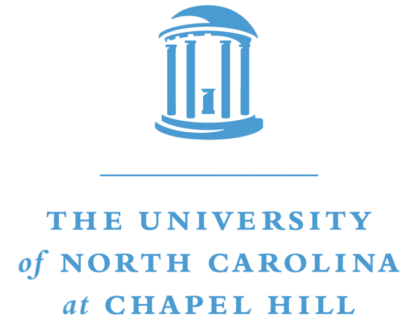
University of North Carolina at Chapel Hill
- Chapel Hill, NC
Academic Highlights: Undergraduates can choose from 74 bachelor’s degree programs in a number of schools and colleges, the largest of which is the College of Arts & Sciences. 44% of classes have a student enrollment under 20. The social sciences (15%), biology (12%), media/journalism (9%), computer science (8%), and business (6%) are the areas in which the most degrees are conferred. The Kenan-Flager Business School is internationally renowned and requires separate admission. Other strong programs include those in chemistry, journalism, psychology, and political science.
Professional Outcomes: Six months after leaving Chapel Hill, 97% of 2022 grads had entered employment, military service, or graduate school. Among the for-profit companies that hire the most graduates are Wells Fargo, IBM, Cisco, Deloitte, EY, Google, Microsoft, Amazon, Oracle, McKinsey & Company, and Goldman Sachs. In the nonprofit sector, a large number of alumni are employed by AmeriCorps, NIH, Teach for America, and the Peace Corps. The average starting salary is $70,619. 18% of 2022 grads enrolled directly in graduate/professional school.
- Enrollment: 20,210 (undergraduate); 11,739 (graduate)
- Cost of Attendance: $27,036 (in-state); $60,040 (out-of-state)
- Median SAT: 1450
- Median ACT: 32
- Acceptance Rate: 17%
- Retention Rate: 96%
- Graduation Rate: 91%

University of California, Santa Cruz
- Santa Cruz, CA
Academic Highlights: 73 undergraduate majors are available at UCSC within the following academic divisions: arts, humanities, physical and biological sciences, social sciences, and the Jack Baskin School of Engineering. 75% of undergraduates conduct research during their four years. Biology is the university’s most popular major; 15% of all degrees conferred in 2022 were in this discipline. 14% of degrees were granted in the social sciences, 13% in computer and information sciences, and 12% in psychology. CS is one of UCSC’s most respected programs.
Professional Outcomes: Within three months of earning their degree, 29% of UCSC grads had found employment and 17% started graduate programs. Proximity to Silicon Valley helps open doors to companies like Google, Apple, Meta, Genentech, and Cisco, which all employ over 250 alumni. More than 100 alums can also be found in the offices of Amazon, Salesforce, Microsoft, Adobe, and LinkedIn. Among graduates from the last five years, over half make more than $40k.
- Enrollment: 17,502 (undergraduate); 1,976 (graduate)
- Cost of Attendance: $41,283 (in-state); $73,857 (out-of-state)
- Median SAT: Test Blind
- Median ACT: Test Blind
- Acceptance Rate: 63%
- Retention Rate: 88%
- Graduation Rate: 77%
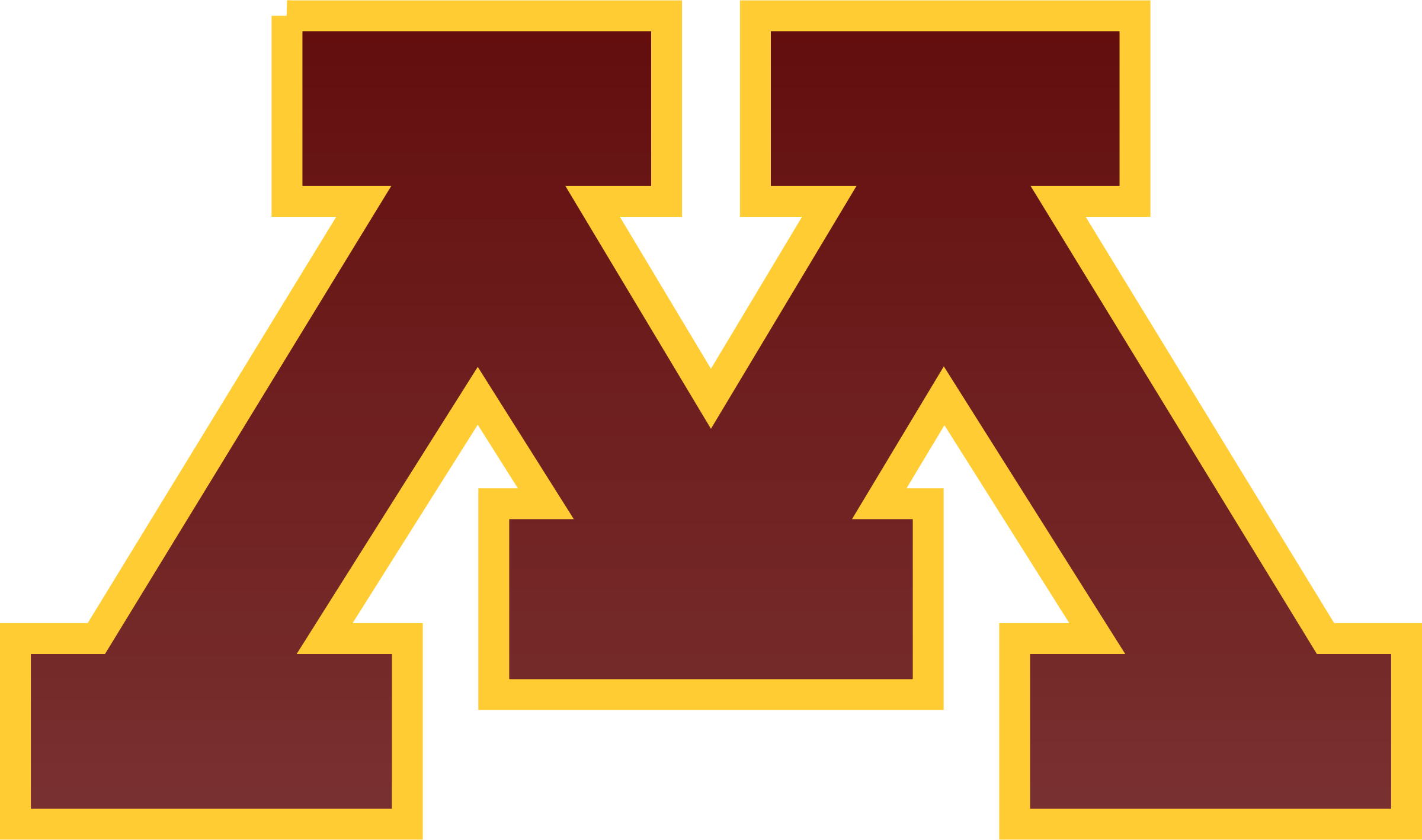
University of Minnesota–Twin Cities
- Minneapolis, MN
Academic Highlights: There are 150 majors available across eight freshman-admitting undergraduate colleges. 65% of class sections enroll 29 or fewer students. The most commonly conferred degrees are in biology (13%), business & marketing (11%), engineering (10%), the social sciences (10%), computer science (9%), and psychology (8%). The College of Science and Engineering and the Carlson School of Management have strong national reputations, and the chemistry, economics, psychology, and political science departments are also well-regarded.
Professional Outcomes: The top seven companies snatching up the largest number of recent grads are all companies headquartered in the state of Minnesota: Medtronic, Target, 3M, United Health Group, US Bank, and Cargill. Google, Apple, and Meta all employ hundreds of Twin Cities alumni. The mean starting salary for recent grads was $50k. With 130 graduate programs in science, art, engineering, agriculture, medicine, and the humanities, the University of Minnesota retains many of its graduates as they pursue their next degrees.
- Enrollment: 39,248 (undergraduate); 15,707 (graduate)
- Cost of Attendance: $33,032-$35,632 (in-state); $54,446-$57,046
- Median SAT: 1370
- Median ACT: 29
- Acceptance Rate: 75%
- Retention Rate: 90%
- Graduation Rate: 84%

University of Vermont
- Burlington, VT
Academic Highlights: With over 100 majors and 100 advanced degree programs, the University of Vermont has offerings in just about any major you can name. They sport a student-to-faculty ratio of 19:1 and 41% of sections enroll no more than 19 students. The most popular majors are fairly evenly spread around with biology (12%), natural resources and conservation (10%), business (9%), and nursing (9%) all attracting similar numbers of undergraduates.
Professional Outcomes: Over the last three years, graduates have enjoyed a 94% success rate. Alumni earned an average starting salary of $49,909 during that span of time. Roughly 90% of grads stated that their current job was related to their career goals. Top employers included Mass General Hospital, Beta Technologies, and GlobalFoundries. Looking at the Class of 2022 who enrolled in advanced degree programs, common universities included Northeastern, BU, Simmons, NYU, and Cornell.
- Enrollment: 11,898
- Cost of Attendance: $32,834 (In-State); $59,278 (Out-of-State)
- Median SAT: 1350
- Median ACT: 30
- Acceptance Rate: 60%
- Retention Rate: 89%
- Graduation Rate: 76%

Oregon State University
- Corvallis, Oregon
Academic Highlights: Across its 11 colleges, graduate schools, and Honors College, OSU offers close to 200 degree programs. While 28% of classes have fewer than 20 students another 21% of sections enroll more than 50 individuals. The three most commonly earned degrees are in engineering (17%) computer science (15%), and business (15%). Other popular areas of study are biology (7%), natural resources and conservation (6%), and the social sciences (5%).
Professional Outcomes: Large number of College of Business alums work at companies such as Nike, Boeing, Intel, Deloitte, Oracle, KPMG, and Adidas. Including all majors, many others work for Amazon, Salesforce, Meta, Apple, Google, and NVIDIA. An impressive 67% of those applying to medical school are accepted, a figure far higher than the national average. Med schools where recent grads now attend include Harvard, Yale, the University of Chicago, and UCLA.
- Enrollment: 28,905
- Cost of Attendance: $28,866 (In-State); $51,642 (Out-of-State)
- Median SAT: 1260
- Median ACT: 26
- Acceptance Rate: 83%
- Retention Rate: 87%
- Graduation Rate: 70%
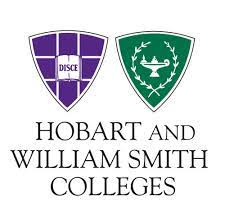
Hobart & William Smith Colleges
- Geneva, NY
Academic Highlights: The offerings at Hobart & William Smith are wide with 45 majors and 68 minors. The average class size is just 16 students, and 100% of courses are taught by full-time faculty; the student-to-faculty ratio is an excellent 9:1. The social sciences account for the greatest number of degrees conferred each year, typically more than 25%. The next most popular areas of concentration are in biology, psychology, journalism, and the physical sciences.
Professional Outcomes: In a typical year, approximately two-thirds of HWS grads immediately enter the world of full-time employment while 15% jump right into pursuing a graduate or professional degree. Companies employing the greatest number of grads include Morgan Stanley, Fidelity Investments, Merrill Lynch, JP Morgan, Google, UBS, JPMorgan Chase, and Citi. On the graduate and professional school front, HWS alumni fare quite well, including at many of the top programs in the country.
- Enrollment: 1,559
- Cost of Attendance: $80,000
- Median SAT: 1320
- Median ACT: 31
- Acceptance Rate: 68%
- Retention Rate: 86%
- Graduation Rate: 74%

Juniata College
- Huntingdon, PA
Academic Highlights: A stunning 95% of graduates report engaging in some form of hands-on learning in their time at the college. The 10:1 student-to-faculty ratio may lag slightly behind some other small liberal arts schools featured in this guide, but professors are deployed with enhancing the undergraduate experience in mind. Biology is easily the most common major as it accounted for 22% of degrees conferred in 2022; next in line were natural resources and conservation (12%), education (12%), and the physical sciences (7%).
Professional Outcomes: Ninety-six percent of Juniata students are employed or attending graduate school six months after diplomas are awarded. More than ten alumni work for the University of Pittsburgh Medical Center, Merck, Geisinger, WellSpan Health, and the US Army. Recent graduate acceptances include Columbia, Wake Forest, Johns Hopkins, and MIT. With a 90% acceptance rate for premed and other graduate programs in the health professions, Juniata is a choice institution for future doctors, nurses, dentists, veterinarians, and other health professionals.
- Enrollment: 1,177
- Cost of Attendance: $69,948
- Median SAT: 1230
- Median ACT: 29
- Acceptance Rate: 76%
- Retention Rate: 81%
- Graduation Rate: 71%

University of North Carolina Wilmington
- Wilmington, NC
Academic Highlights: Nearly 90 undergraduate programs are available across five different colleges: the Cameron School of Business, the College of Health and Human Services, the College of Humanities, Social Sciences, and the Arts, the College of Science and Engineering, and the Watson College of Education. Nursing is the most popular major, accounting for 20% of degrees conferred, followed by business (18%), speech communication and rhetoric (6%), and psychology (6%). The average class size is 22, and 40% of classes enroll under 20 students.
Professional Outcomes: Nursing grads—UNCW’s most popular major—make an average starting salary of $67k. Business majors—the second-most popular discipline—have a post-grad employment rate of 45%. 15% of newly minted business alums immediately pursue a graduate or professional program. During their undergrad years, 58% of business students ultimately complete an internship, and they enjoy an average starting salary of $55k.
- Enrollment: 14,294 (undergraduate); 3,549 (graduate)
- Cost of Attendance: $27,030 (in-state); $42,603 (out-of-state)
- Median SAT: 1300
- Median ACT: 26
- Acceptance Rate: 69%
- Retention Rate: 83%
- Graduation Rate: 74%
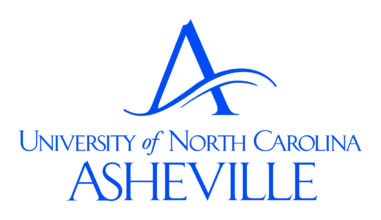
University of North Carolina Asheville
- Asheville, NC
Academic Highlights: Of the 30+ bachelor’s degree programs, a standout Art & Art History Department attracts scores of talented young painters, sculptors, and photographers. As such, it conferred the greatest percentage of degrees in 2022 (16%), followed by psychology (14%), the social sciences (10%), and business (9%). Engineering and computer science degrees accounted for a combined 19%. 97% of courses enroll 29 or fewer students (the average class size is just 14), and 65% of students complete original research in their field of study.
Professional Outcomes: Asheville rates well when it comes to generating a high degree of social mobility. Employers snagging the greatest number of Bulldog alumni include Mission Health, Wells Fargo, Lowe’s, Bank of America, Thermo Fisher Scientific, and a number of local school districts. A fair number of grads also find employment at Duke Energy Company, the US Environmental Protection Agency, Apple, EY, PwC, and the National Oceanic and Atmospheric Administration. Many alumni pursue graduate schools at other public universities within North Carolina.
- Enrollment: 2,907 (undergraduate); 18 (graduate)
- Cost of Attendance: $24,856 (in-state); $43,304 (out-of-state)
- Median SAT: 1240
- Median ACT: 26
- Acceptance Rate: 94%
- Retention Rate: 73%
- Graduation Rate: 56%

St. Mary’s College of Maryland
- St. Mary's City, MD
Academic Highlights: St. Mary’s College of Maryland offers 25 majors and 31 minors. 96% of course sections enroll fewer than 29 students, and 72% of classes enroll fewer than 20. The college is known for its strong STEM programs; roughly 30% of all degrees conferred are in a STEM field. The social sciences accounted for 23% of the degrees earned in 2022 followed by psychology (17%), biology (13%), natural resources and conservation (8%), and the visual and performing arts (7%).
Professional Outcomes: Within six months of earning their bachelor’s degrees, 96% of St. Mary’s grads have landed a job or started an advanced degree. Healthcare, wellness, publishing, government, and media are the most popular industries. Top employers of Osprey alumni include JPMorgan Chase & Co., the Centers for Disease Control, BNY Mellon, Booz Allen Hamilton, the Smithsonian, and the US Department of Defense. Over 25% of alumni begin work on their next degree within six months of graduation, earning acceptances from the likes of Harvard, Yale, Rice, Penn, and the University of Chicago.
- Enrollment: 1,513 (undergraduate); 23 (graduate)
- Cost of Attendance: $33,611 (in-state); $50,282 (out-of-state)
- Median SAT: 1250
- Median ACT: 29
- Acceptance Rate: 77%
- Retention Rate: 82%
- Graduation Rate: 71%
We hope you have found our list of the Best Colleges for Environmental Science to be useful and informative as you continue your college search process. We also invite you to check out some of our other resources and tools including:
- AP Score Calculators
- SAT Score Calculator
- ACT Score Calculator
- Best Summer Programs
- College List Building Tool

